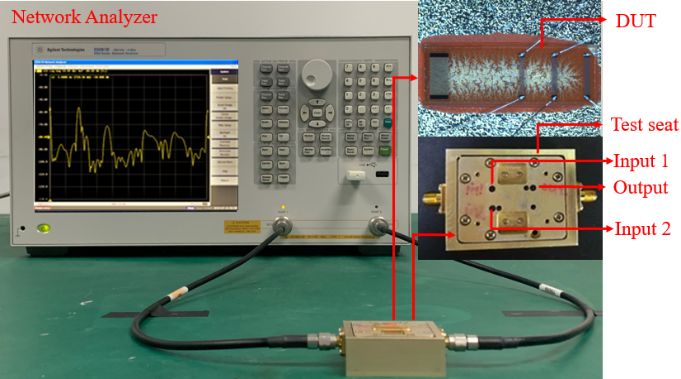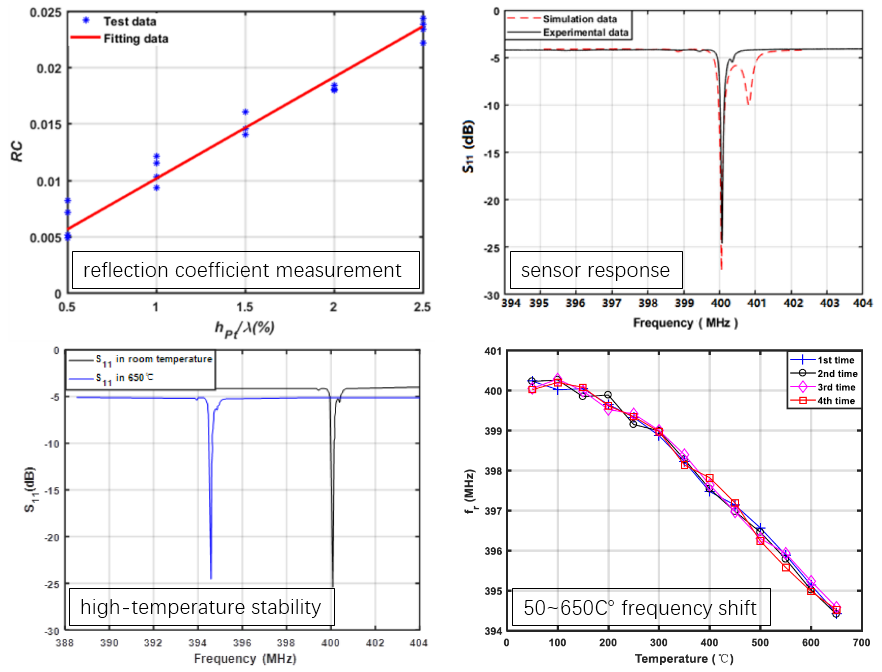Traditional sensing technology is not an adequate to sense extremely high temperature because of its wired installation and power supply requirement. Surface acoustic wave (SAW)-based devices are perfect solutions because they feature passive operation with no need for separate power supply, making it possible to install wirelessly at particularly inaccessible locations.
Researchers from the Institute of Acoustics of the Chinese Academy of Sciences (IACAS) extracted an accurate reflection coefficient to optimize the Pt/LGS device by using the short pulse method.
With Pt film of different thickness to wavelength ratio, researchers carried out an experiment based on the structure of the Pt/LGS device. They used the least squares method to fit the experimental data and characterized the calculation formula of the reflection coefficient. They also extracted the other coupling of modes (COM) parameters of Pt/LGS by finite element method (FEM) approaches. The one-port resonator patterned device with the Pt/LGS structure was simulated through the typical COM model, determined the optimal design parameters with a larger Q-value.
Based on the simulation, researchers developed a 400 MHz one-port SAW resonator with Pt electrodes on LGS substrate photolithographically. A high Q-value was obtained after characterization, and the measured result agreed well with the simulation. In addition, experiments of the proposed sensing device under the temperature of 50~650℃ showed excellent stability and linear temperature coeffcient of frequency (TCF), which indicated its promising high-temperature sensing characteristics.
The research shows that SAW high temperature sensing technology could provide a good solution for high sensitive temperature monitoring and early warning in extremely high-temperature environment.


Figure 1. The structure of the SAW device for extraction of reflection coefficient (the upper) and the experimental setup for reflection coefficient extraction (the lower). (Image by IACAS)

Figure 2. Reflection coefficient measurement and high temperature sensor response. (Image by IACAS)
The research, published online in the sensors, was supported by the NSFC Joint Key Fund Project (U1837209).
Reference:
LI Xueling, WANG Wen, FAN Shuyao, YIN Yining, JIA Yana, LANG Yong, LIU Mengwei. Optimization of SAW devices with LGS/Pt structure for sensing temperature. Sensors 2020, 19(2), 310. DOI: 10.3390/s20092441.
Contact:
ZHOU Wenjia
Institute of Acoustics, Chinese Academy of Sciences, 100190 Beijing, China
E-mail: media@mail.ioa.ac.cn


